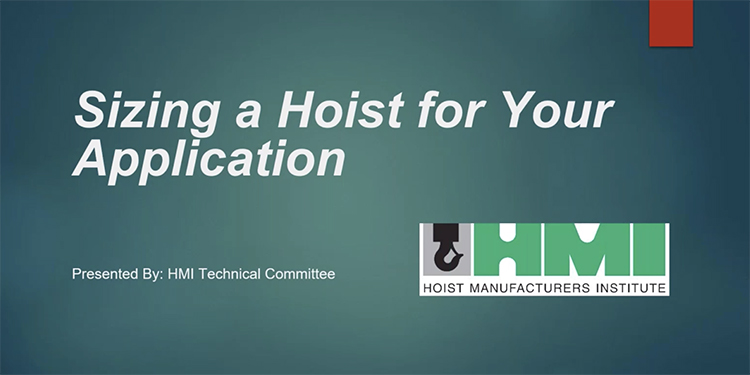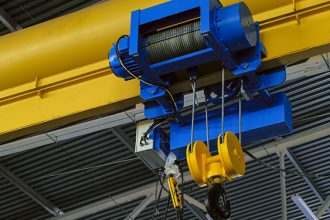
Recently, the technical committee of the Hoist Manufacturers Institute (HMI) of MHI hosted a webinar entitled “Sizing a Hoist for Your Application.” The free, 45-minute session explored both The American Society of Mechanical Engineers (ASME) and European Federation of Materials Handling and Packaging Manufacturers (FEM) standards — as well as other considerations — when selecting the appropriately sized hoist for a given application.
The session referenced several different standards that pertain to hoist selection criteria, including duty class, performance, service classifications, and more. These include:
- ASME HST-1: Performance Standard for Electric Chain Hoists
- ASME HST-4: Performance Standard for Overhead Electric Wire Rope Hoists
- FEM 9.511: Rules for the Design of Series Lifting Equipment – Classification of Mechanisms
- FEM 9.755: Methods for Achieving Safe Working Periods for Motorized Serial Hoist Units
In addition to the standards, there are several key considerations that must be taken into account when determining the optimal hoist for an application. Among them:
Service Life. The majority of the standards suggest a 10-year total operating lifespan of a hoist as a general guideline. That said, actual usage, environmental conditions, maintenance practices, and repair history can all significantly impact a hoist’s actual service life. Therefore, it is important to weigh those factors when planning for either the replacement or refurbishment of a given hoist.
Operational Periods. The amount of time a hoist is used also impacts the selection process. Some applications will use a hoist for uniformly distributed work periods; others will use it less frequently, operating it as needed from a cold start. The usage period also impacts the hoist duty class required.
Load Spectrum. The standards offer differing approaches for determining the range of uniformly distributed load weights a hoist can handle. FEM classifies hoist loading based on cubic mean value; ASME provides a means to calculate the mean effective load.
The session offers several examples of how to perform a fundamental and a detailed analysis both with FEM and ASME methodologies for electric chain hoists and wire rope hoists. These examples illustrate how to determine the appropriate hoist by using supplied information about the expected load distribution, usage rates, run times, and maximum starts per hour (including any jogging of the load). Calculations for different application scenarios are examined, with detailed explanations about how the findings impact the ultimate decision about the size and duty class of hoist required.
Want more information about how to select the optimal hoist for your application? In addition to this webinar, HMI has published multiple technical papers, including a Comparison of Hoist Duty Service Classifications and a comprehensive library of product guides via its website at www.MHI.org/hmi.



